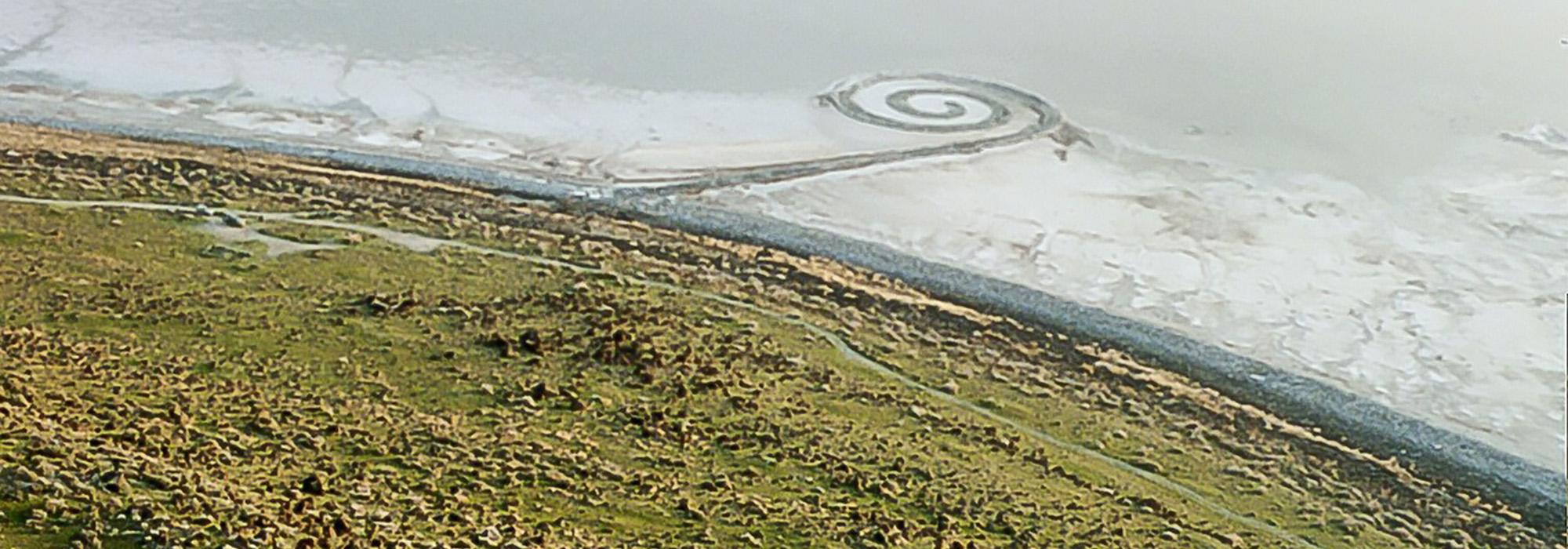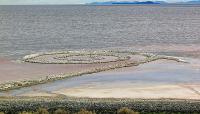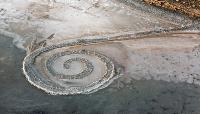This earthwork, designed by the artist and sculptor Robert Smithson in 1970, is an icon in the field of land art. The 1,500-foot long counter-clockwise spiral, built of earth, basalt rock, and precipitated salt crystal, reaches out into the Great Salt Lake near Rozel Point, Utah. Smithson was attracted to this remote location by the landscape’s stark qualities, abandoned industrial relics, and the presence of red-tinged algae which grows in the otherwise lifeless northern arm of the salt lake. Originally very dark rock against reddish water, salt encrustations have created a much whiter form against pink-hued water.
The design reflects Smithson’s interest in entropy and was influenced by the physical nature of the site which suggested the spiral form. Constructed at an elevation of 4,195 feet, it was intended to appear and disappear as the lake’s water level varied. Rising water levels caused the earthwork to be submerged just a few years after its completion, remaining as such until the 1990s. Since then, water level fluctuations have allowed episodic re-emergences. Now in the collection of the New York DIA Center of the Arts, the condition of Spiral Jetty is being documented by DIA since its reappearance.






